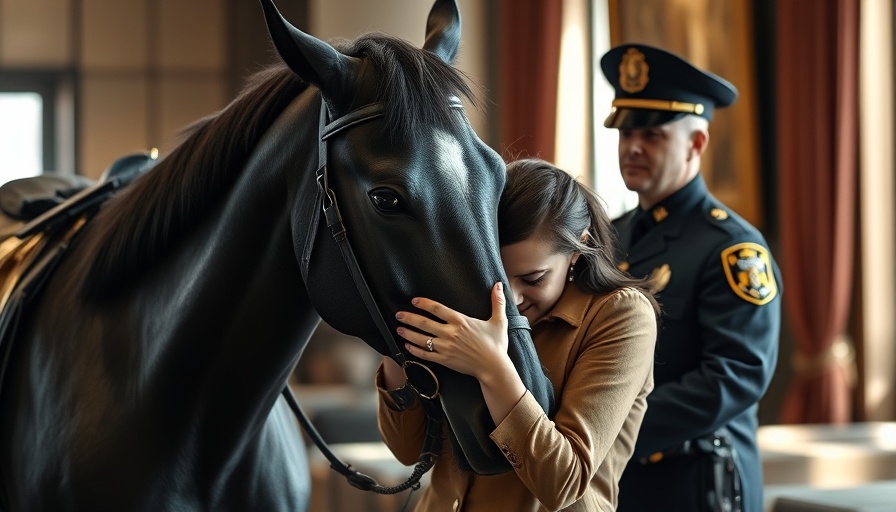
Teak’s Legacy: A Career Marked by Service and Community
As Teak, the beloved police horse from the Minneapolis Police Department, steps into retirement, he leaves behind a legacy that highlights the complex relationship between law enforcement and the communities they serve. With 17 years of service, Teak's contributions were far-reaching; he played significant roles in managing crowds at high-profile events and navigating the delicate atmosphere during community unrest.
Historically, mounted police units have been viewed as symbols of community engagement and safety. Teak's story emphasizes this historical context—community interactions are essential for building trust. Amid rising concerns about police reform and accountability, engaging with the public through mounted patrols adds an approachable face to law enforcement, helping to bridge gaps between officers and citizens.
From the Spotlight to the Stable: Understanding Teak's Role
Teak was more than just a horse; he was a critical player in significant events, ranging from political rallies to the disturbances that followed George Floyd’s tragic murder. His presence reassured many, often marking the line between peace and chaos. Such scenarios reflect a historical pattern where horse-mounted units have provided comfort during challenging times. The unique role of such officers—both human and equine—cannot be understated, especially when we consider the growing sentiment surrounding law enforcement's role in community tensions.
The Emotional Bond: A Retiring Officer Finds Closure
For Carrie Brummer, Teak’s original owner, the reunion was emotional. Various studies suggest that animals in law enforcement significantly counter stress, promote teamwork, and improve officer wellness. With Teak’s final days spent in a familiar barn, it serves not only as a closure for Brummer but as a heartwarming testament to resilience in public service.
Future Trends in Mounted Patrols and Community Engagement
As we look forward, it's essential for law enforcement agencies to reassess their strategies surrounding community engagement. Innovations in policing, such as technology that tracks community sentiments and incidents, could work hand-in-hand with mounted units to foster better police-community relations. The legacy of horses like Teak can guide departments in evolving their approach to community interactions, considering merging traditional techniques with modern practices.
Challenges Facing Mounted Units in Modern Policing
Even as Teak retires, questions about the future of mounted police units loom. Budget constraints and the growing pressure on police departments to embrace technological advancements may challenge their existence. It begs the question: Can an age-old practice coexist within a rapidly changing law enforcement landscape? Recognizing and addressing these challenges allows departments to adapt while retaining the essence of community service that Teak symbolized.
 Add Row
Add Row  Add
Add 

 Add Element
Add Element 




Write A Comment